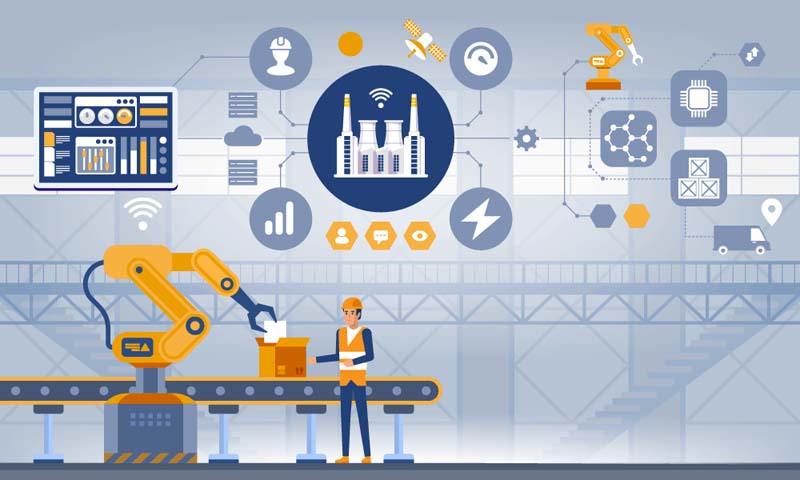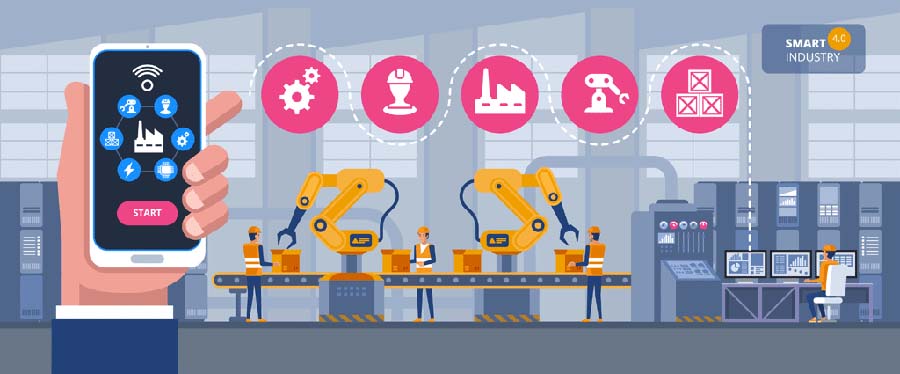Industrial Internet of Things, as a technology, global spending on manufacturing IIoT platforms is expected to grow from $1.67B in 2018 to $12.44B in 2024. According to “Forbes”, this will give it a compound annual growth rate (CAGR) of 40% in seven years. Among the industries that benefit the most, manufacturing is expected to be among the best in the next few years. The use of such technologies guarantees higher connectivity than ever before and has special applications in the field of custom processing.
In the next few years, the computer numerical control (CNC) equipment market will continue to grow, reaching a value of 93 billion US dollars by 2024. The annual growth rate exceeds 6%. CNC machining is very important in modern manufacturing. It can help us create various products in many industries such as agriculture, aerospace, guns and circuit boards. It seems to continue to improve on a fairly constant basis, the method becomes more precise, and it can better handle various materials.
CNC machining is no longer a single process, but a type of manufacturing that can be carried out in multiple ways as needed: 3-axis, 4-axis and 5-axis machining, milling, turning and gear hobbing, etc., all of which can make various plastic, metal and other materials are molded. This versatility will get more applications in the next few years.
When deploying such equipment in machine shops and large factories, computers have already taken on many (symbolic) heavy tasks. The continuous expansion and improvement of the Internet of Things will promote CNC machining to obtain greater revenue and broader utility. In fact, as the Internet of Things further connects and digitizes our factories, the Internet of Things will revolutionize many manufacturing practices. As a potential driving force for the growth of CNC machining, some potential advantages of the combination of CNC machining and IIoT are particularly prominent:
Product Quality Control
By combining the Internet of Things with CNC machining, the company can assemble a miniature sensor for each part produced and connect it to a larger network. This not only makes it easier to track the product in any subsequent transportation and assembly work, but also makes it easier to identify and resolve production errors. If the sensor detects a defect, the machining process can be stopped if necessary until it is eliminated.

Preventive Maintenance
Preventive maintenance is one of the most frequently mentioned advantages of IoT in manufacturing, and it is undoubtedly a factor involving CNC machining. As Particle said, the Internet of Things not only allows the above-mentioned products, but also allows real-time remote status monitoring of the machine itself. Basically it has nothing to do with the CNC machining mechanism. Orders can be produced. IoT-connected sensors can ensure that they are doing well enough to alert managers and even notify all routine maintenance or maintenance requirements in advance.
Automated Labor
This is a fairly large point that could make for a whole topic of conversation unto itself, but it’s also important to mention that the IoT stands to enable other robotic systems to work alongside CNC machining. For example, consider the simple matter of organizing products after they are created. Now, this is more or less considered a human task, but as IoT allows various machines and systems to communicate with each other, we can also see that this classification and organization is completely automated. This can reduce labor costs and prevent work injuries.
Enhanced Supply Chain
IIoT has also improved the functionality of the entire supply chain. The interconnected system allows key personnel to access inventory records and product information from almost any device with Internet access. The goods being transported can be tracked easily and in real time through sensors. These sensors can display information about their current location, environment and even physical conditions.
Increase Sustainability
IIoT has made many improvements to the sustainability of the factory. Through IIoT, cheaper and cleaner hardware, comprehensive data analysis and power consumption adjustment equipment can be realized.
Save a lot of costs. Robot-driven production through IIoT can save a lot of costs. By automating the mundane and tedious tasks in the factory, manufacturers can reduce their worries about ordinary workers and focus on cultivating their top talent. In addition, the enhanced sustainability and higher energy efficiency of connected devices through IIoT can even save more costs.

Increase Competitiveness
Embracing IIoT can also make companies more competitive. Although this may be a standard part of doing business in just a few years, the infrastructure does not yet exist. Since some companies are reluctant to adopt the new policy and fully accept all the features provided by IIoT, those who take an early positive attitude can gain an advantage over their strongest competitors. According to a recent study, the earliest and largest IIoT integrators will benefit the most from these infrastructure formation stages.
CNC machine tools already rely on computers, which makes it an attractive place to start such work. As we have seen, the impact on efficiency, safety, and lean and more proactive manufacturing technologies is huge and increasingly difficult to ignore. The current advantages of IIoT are numerous and easy to understand. As the technology develops and improves in the next few years, anyone is guessing what changes may be brought about and the additional advantages they provide.
With these benefits and their positive impact on related industries, we fully hope that IIoT will play a greater role in promoting the development of CNC machining and other advanced manufacturing processes.


